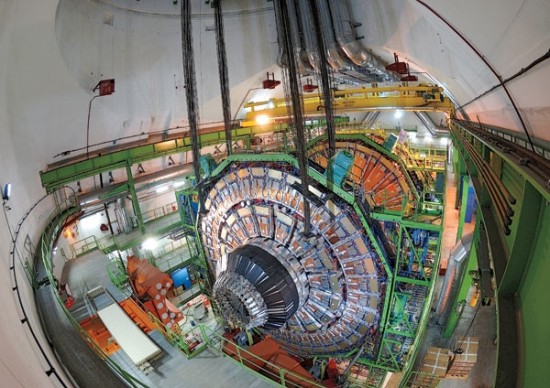Intelligent Machines
The Making of a New Collider
The biggest physics experiment ever, CERN’s new particle accelerator, goes live this summer.

The biggest physics experiment ever, CERN’s Large Hadron Collider (LHC), goes live this summer. The international project, whose design was approved in 1994, cost over $6 billion. Thousands of powerful magnets, cooled by tons of liquid helium to 1.9 Kelvin (just above absolute zero), will guide two beams of protons as they travel in opposite directions around a 27-kilometer tunnel at close to the speed of light; then magnets at two locations will pull the beams together for the highest-energy particle collisions ever achieved. By identifying the products of these collisions, physicists hope to test the standard model of physics and discover new subatomic particles. (Read Nobel laureate Jerome Friedman’s thoughts on the LHC.)
Precision Before Collision
The compact muon solenoid (CMS), one of the LHC’s main detectors, is made up of 11 conjoined pieces; each has layers of detectors tuned to find different particles that might result from proton collisions, including muons and electrons. This piece weighs 1,270 metric tons and was lowered from above ground to the bottom of the tunnel, 90 meters below, with mere centimeters of clearance. It took 11 hours.
Precision Before Collision
The compact muon solenoid (CMS), one of the LHC’s main detectors, is made up of 11 conjoined pieces; each has layers of detectors tuned to find different particles that might result from proton collisions, including muons and electrons. This piece weighs 1,270 metric tons and was lowered from above ground to the bottom of the tunnel, 90 meters below, with mere centimeters of clearance. It took 11 hours.
